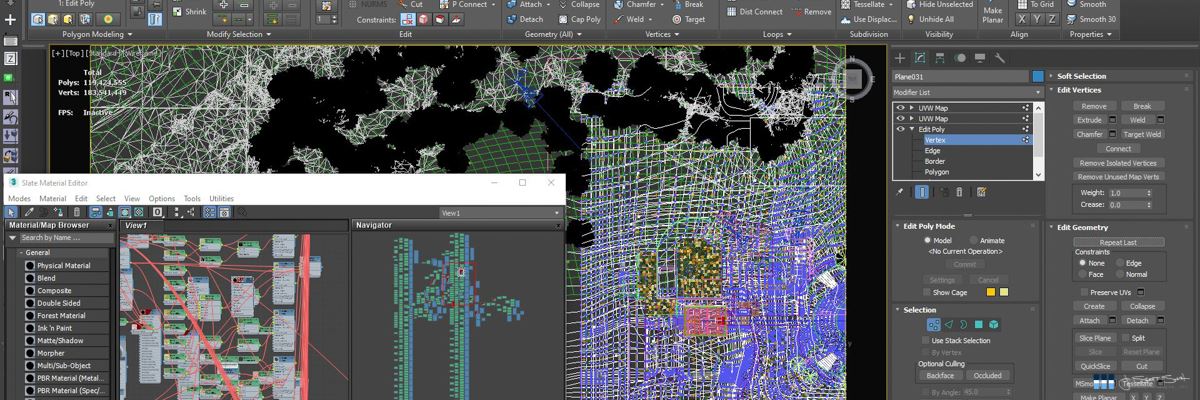How Does 3D Rendering Work
The process of 3d rendering takes three-dimensional models and creates a two-dimensional image or video from them. This is done by taking into account the perspective, lighting, and shadows of the object or scene. 3D rendering can be used for a variety of purposes, such as creating images or videos for architectural design projects, product advertising, or even movies!
Different Methods
There are a few different methods that can be used for 3D rendering. The first is ray tracing, which simulates the path of light beams as they bounce around an object. This method is often used for creating realistic images and videos. Another method is called scanline rendering, which traces each line in an image and calculates how the lighting should affect it. This method is often used for creating 3D animations.
Types of Software Involved
How does 3d rendering work? There are many different software programs that can be used for creating the 3D model, such as 3ds Max, Maya, Blender, and Cinema 4D. After that, we use what is called a “render engine” to set the lighting, textures, and all the physics that go into making a CG scene appear real. This render engine is also what we use to render the final image or video. After this, we may use programs like Adobe Photoshop to adjust the image for the desired effect. This process is known as “post-production.”
Modeling Comes First
The first step is creating a model. Some of the most well-known programs are 3DS Max and SketchUp. Each program has its strengths and weaknesses. You can use these programs to create 3D models of objects or buildings. They are often used in architectural design projects because they allow architects and their clients to visualize how their designs will look before construction begins.
Textures Must Be Correct
Next is setting up the textures and lighting. The textures give the 3D rendering a lot of the realism. The most evident texture could be a simple color, swatch of fabric for a sofa pillow or a sample of concrete. There are many other aspects to material settings though, including textures that control bumpiness, transparency, emission, reflection, and much more.
Lighting is Critical
Equally important to model and textures is the lighting. Just like in the real world, light has many uses. It could be to simply illuminate the scene. Usually it does much more than that. We look at the balance of light and shadow, the actual color of the light, the direction, what other objects influence the light, etc. Often we use light to accentuate a feature. And when it comes to artificial light we actually simulate real-world light fixtures with data supplied to us by light manufacturers.
The lighting can make all the difference in selling a shot as looking real. Special effects can also be added at this stage which will make your render a cut above the rest.
Time To Render!
Camera Setup
The model, along with its textures and lights, is then viewed through a simulated camera which has many of the same settings as a real-world camera. This is where we set up shutter speed, film type, lens specifications and more, just like a physical photographer. At this point we have everything we need to start making some test images to evaluate.
File Formats
Finally, when creating a 3D rendering, it’s important to keep in mind the different types of file formats that can be used. Most people are familiar with JPG, PNG and PDF, but there are hundreds more. We want to balance image quality, special capabilities of the format, and the client’s intended use.
What Are 3D Renderings Used For?
There are many different applications of this 3D rendering technology. Often the most obvious application is in film and video game special effects. However, you might be surprised to learn that most of the commercials and advertisements you see use CG renderings rather than real photography. The niche we spend most of our time in is architectural renderings. This involves taking a two-dimensional architectural drawing and turning it into a three-dimensional image that gives a realistic view of how the finished building will look.
This type of rendering is often used to help clients make decisions about things like how big their windows should be or how much space they want between rooms inside of the building.
It also allows architects to show potential clients what types of materials would look best on their property before construction begins so that everyone can get a better feel for how everything will turn out in person.
You Came to the Right Place
Hopefully this article gives you a sense of how does 3d rendering work. Whether you need a simple 3D model for analysis or you want a hyper-realistic architectural rendering for presentation, finding the right company to do the job is essential.
The most important thing to consider when looking at your options is whether or not the company has experience doing this type of work for other clients before you hire them. This can make a big difference because it allows them to focus on providing quality results rather than trying out new techniques as they go along with your project.
With over twenty years in this industry, plus the specific skills each member of our team brings, we have the expertise needed to help you get the beautiful renders your project needs. Contact us today to learn more!

0 Comments